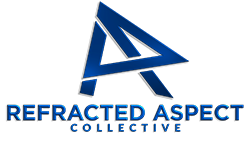
In the vehicles sector of the Shooting, Hunting & Outdoor Trades, the question of how often sales teams pursue deals that should have been disqualified from the start is more than a passing concern. It directly impacts operational efficiency, resource allocation, and ultimately, profitability. Leaders face the challenge of balancing aggressive sales targets with the reality that not every lead aligns with the business’s strategic priorities or capacity. This tension creates a persistent drag on performance that demands clear-eyed attention.
- Recognizing the Cost of Pursuing Poor-Fit Leads
- A Common Scenario: The Stalled Deal That Drains Resources
- How Poor-Fit Leads Disrupt Business Functions
- Why This Problem Persists: The Root Cause in Decision Habits
- The First Meaningful Shift: Introducing Rigorous Qualification
- The Most Common Friction Point: Resistance to Saying No
- Daily Realities of Chasing Poor-Fit Leads
- Frequently Asked Questions
- Reframing the Challenge of Poor-Fit Leads
- Next Steps with Refracted Aspect
Recognizing the Cost of Pursuing Poor-Fit Leads
When sales teams chase leads that don’t fit the business’s criteria, the consequences ripple beyond missed revenue opportunities. It diverts time and energy from prospects that could genuinely advance the company’s goals. This misalignment creates operational friction that leaders in vehicles businesses cannot afford to ignore.
In an environment shaped by regulatory requirements, fluctuating market demand, and competitive pressures, every misstep in lead qualification compounds. The cost is not just in lost deals but in the opportunity cost of what the team could have achieved if focused on the right targets. This is a clear operational tension that demands a disciplined approach to lead management.
A Common Scenario: The Stalled Deal That Drains Resources
Consider a mid-sized vehicles business where a sales team repeatedly pursues a lead that initially seemed promising but quickly reveals itself as a poor fit. The prospect lacks the necessary budget or fails to meet compliance standards, yet the sales process drags on for weeks.
This stalled deal consumes valuable sales hours, delays pipeline progression, and creates frustration among team members. Meanwhile, other qualified leads receive less attention, slowing overall growth. The business feels the strain of this bottleneck, yet the pattern persists because the initial qualification process lacks rigor.
How Poor-Fit Leads Disrupt Business Functions
The pursuit of unsuitable deals creates friction between sales and operations. Sales teams push for exceptions or expedited processes to close these deals, while operations face increased workload and compliance risks. This misalignment leads to repeated handoffs and rework, eroding efficiency.
Finance departments also feel the impact as forecasting becomes less reliable. When deals stall or fall through late in the process, revenue projections shift unpredictably, complicating budgeting and resource planning. The ripple effect of chasing poor-fit leads quietly undermines multiple areas of the business.
Why This Problem Persists: The Root Cause in Decision Habits
The primary driver behind chasing poor-fit leads is an embedded decision habit within sales teams: the tendency to prioritize activity over qualification. This habit often stems from pressure to meet short-term targets without sufficient emphasis on strategic fit.
Without clear, enforced criteria for disqualification, salespeople default to pursuing every lead that shows any potential. This approach becomes normalized, embedding inefficiency into daily operations. Leadership may recognize the issue but struggle to shift these ingrained behaviors without changing the underlying incentives and processes.
The First Meaningful Shift: Introducing Rigorous Qualification
The initial adjustment that can change this dynamic is implementing a disciplined qualification framework that sales teams must follow before committing resources. This doesn’t require complex systems or additional headcount but a clear, agreed-upon set of criteria that define what constitutes a viable lead.
When salespeople understand and adhere to these standards, the team’s focus sharpens. Time is spent on leads that align with business goals, reducing wasted effort and improving pipeline quality. This shift is practical and achievable even under the operational constraints typical in vehicles businesses.
The Most Common Friction Point: Resistance to Saying No
The biggest barrier to progress is the reluctance within sales teams to disqualify leads early. This resistance often manifests as hesitation to say no to prospects, driven by fear of missing opportunities or disappointing management. It creates a cycle where deals linger in the pipeline without real potential.
This operational drag slows decision-making, frustrates other departments, and distorts performance metrics. Leaders should expect this resistance and prepare to address it through clear communication and consistent enforcement of qualification standards.
Daily Realities of Chasing Poor-Fit Leads
In the day-to-day, this issue shows up as repeated conversations about “making exceptions” or “giving it one more try.” Sales meetings often include updates on deals that have stalled for weeks, with team members expressing frustration over unclear next steps.
There are frequent manual fixes to accommodate these leads, such as customized pricing or expedited approvals, which add complexity and risk. Offhand remarks like “we’ll sort that out later” signal a deeper problem of deferred decisions and operational strain. This pattern is familiar to leaders who have watched their teams run fast but struggle to move forward efficiently.
Frequently Asked Questions
Why do my salespeople keep pursuing leads that clearly won’t close?
It often comes down to a culture that rewards activity over quality. Sales teams feel pressure to hit numbers and may lack clear guidelines on when to disqualify leads. Without firm criteria and accountability, the default becomes chasing every lead, regardless of fit.
How can I get my team to focus on better leads without killing motivation?
Focus on redefining success metrics to value qualified pipeline over raw activity. Provide clear qualification standards and reinforce them consistently. When salespeople see that quality leads lead to better outcomes and recognition, motivation aligns with strategic priorities.
What’s the impact on operations when poor-fit leads are pursued?
Operations face increased workload managing exceptions and last-minute changes. This creates bottlenecks and compliance risks, which slow down the entire business. The strain often goes unnoticed until it causes significant delays or errors.
Is this problem unique to smaller or growing businesses?
No, it can affect businesses at any stage. However, growing businesses often feel the pressure more acutely because resources are stretched and processes are still evolving. Without early intervention, inefficiencies compound as the business scales.
How do I start changing this without disrupting current sales momentum?
Begin with small, clear adjustments like introducing a simple qualification checklist. Communicate the rationale openly and involve the team in refining the criteria. This approach minimizes disruption while setting the foundation for better focus and efficiency.
Reframing the Challenge of Poor-Fit Leads
Failing to address the pursuit of poor-fit leads carries tangible costs: wasted time, strained resources, and missed opportunities for growth. When fixed, businesses see clearer pipelines, more predictable revenue, and smoother operations. The shift requires leaders to view qualification not as a hurdle but as a strategic filter that protects the business’s capacity and focus.
This perspective reframes chasing every lead as a risk rather than a reward. It demands discipline and clarity in decision-making, which ultimately strengthens the business’s position in a competitive market. Recognizing this is a critical step toward sustainable growth and operational resilience.
Next Steps with Refracted Aspect
For leaders in the vehicles category of the Shooting, Hunting & Outdoor Trades, gaining clarity on internal dynamics is essential. Refracted Aspect works closely with businesses like yours through structured diagnostics and strategic guidance tailored to your unique operational realities and market pressures.
We understand that your team is not short on effort or expertise but often lacks the outside perspective needed to identify and address embedded challenges. Our approach respects your industry knowledge while providing objective analysis that uncovers hidden inefficiencies and aligns strategy with execution.
If you’re ready to explore practical, grounded solutions for improving lead qualification and overall sales effectiveness, consider taking the next step. Book a Discovery Call to engage in a focused conversation with peers who understand the complexities of your business environment and can help you navigate them with confidence.
















